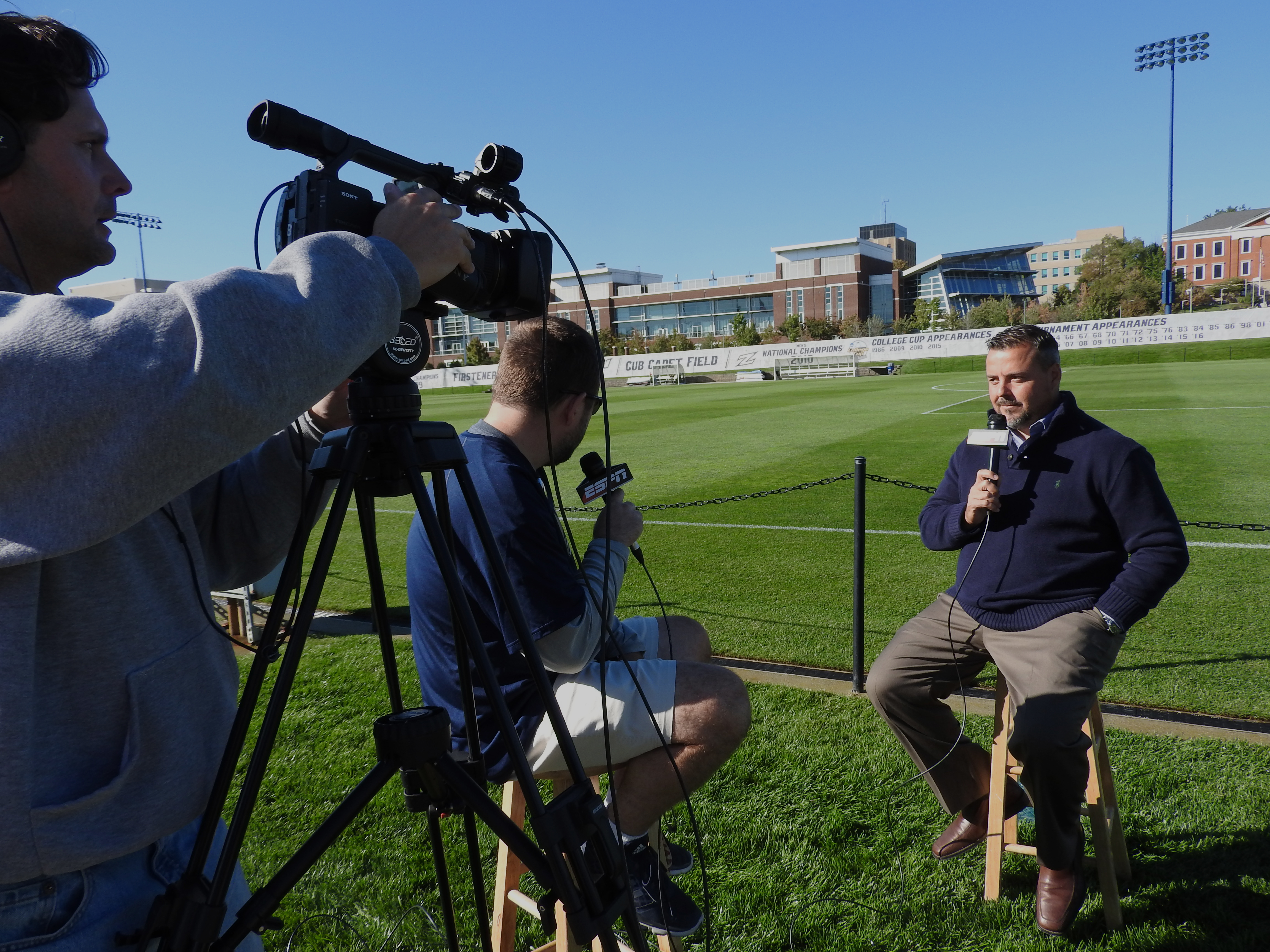Insights on the Sideline Reporter Position
Sideline reporting is all about immediacy, access, and story. A good sideline reporter enhances the broadcast by capturing what camera and play-by-play announcers can’t see from above. Below is a great example of a good sideline reporter interview where the analyst uses some of the insights listed below.
1. Know the Teams and Key Storylines

-Before the game, research both teams and identify angles worth tracking.
-Injuries, key players, coaching history, or emotional elements.
2. Build Rapport with Coaches and Staff
-Arrive early to meet coaches, trainers, and players.
-If possible, set up a call or meeting before the game and ask the coaches for ideas.
3. Master the Art of the Short Report
-Sideline hits should be quick and clear – ideally under 20 seconds.
-Hit the who, what, and why with confidence.
 4. Be Ready for Live Interviews
4. Be Ready for Live Interviews
-Know your questions beforehand but adapt in real-time.
-Always listen to the answer – your follow-up might be more powerful than the initial question.
5. Observe What Others Miss
-Watch the bench: emotions, injuries, coach-player conversations.
-Keep an eye on referees, celebrations, or tension between teams.
6. Have Backup Material Ready
-Keep a notebook or device with bonus stats, bios, or filler stories for downtime.
7. Stay Professional, Calm, and Engaged
-Weather, noise, or chaotic sidelines can distract you.
– keep your focus.
-Dress the part, speak with authority, and maintain composure.
